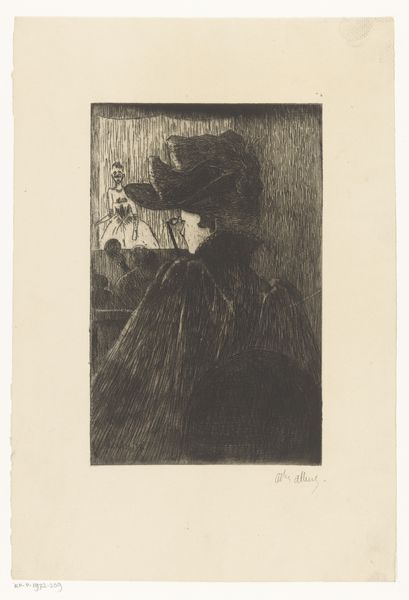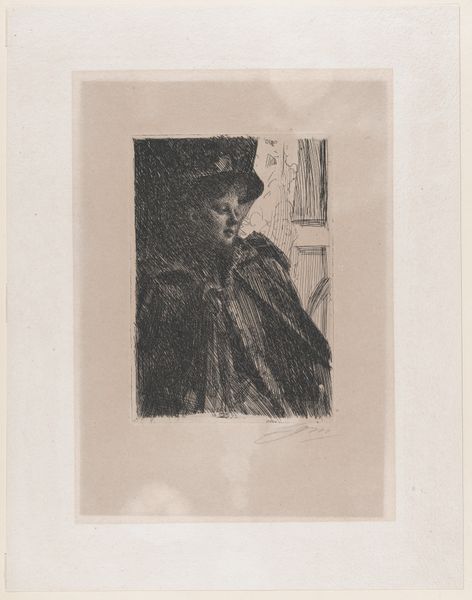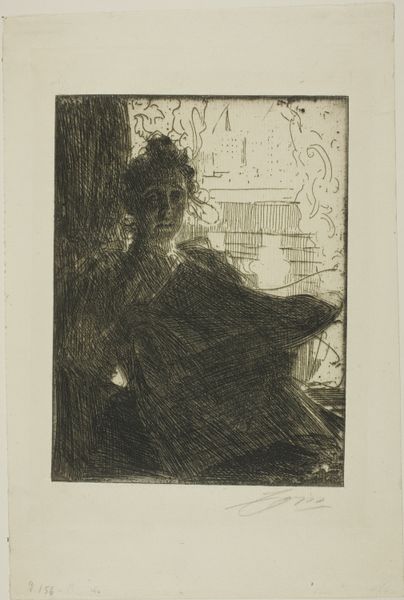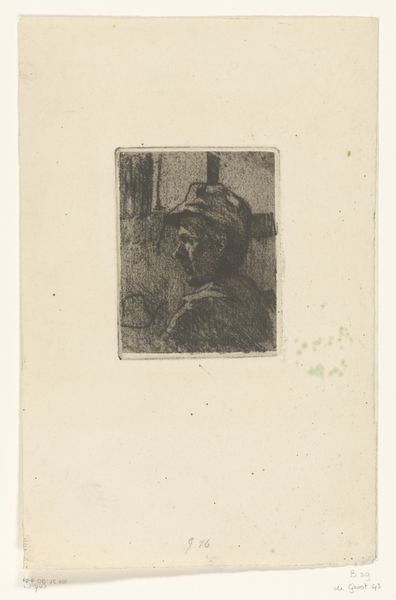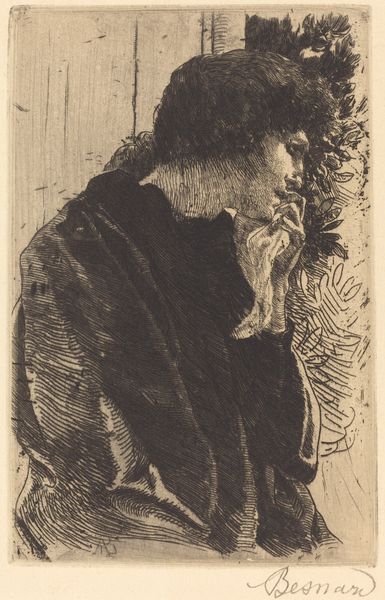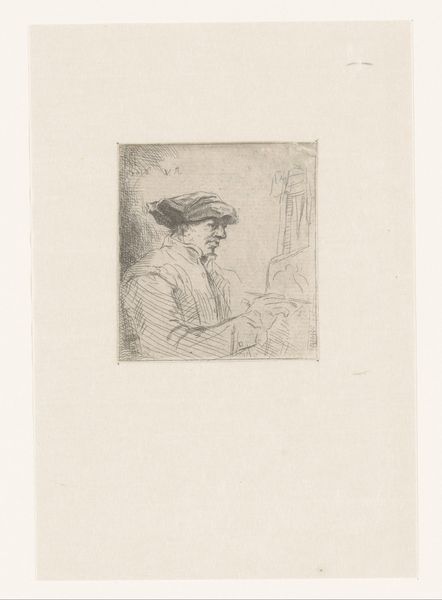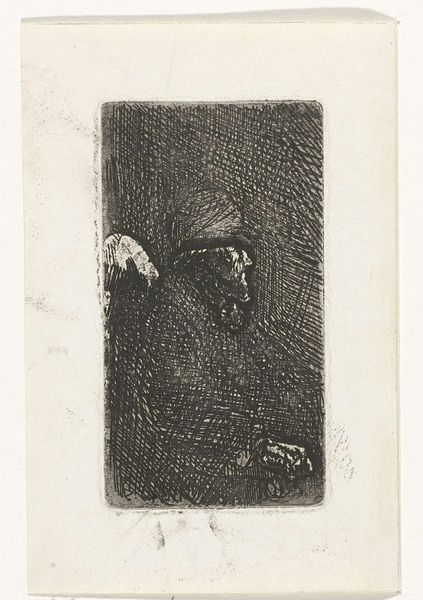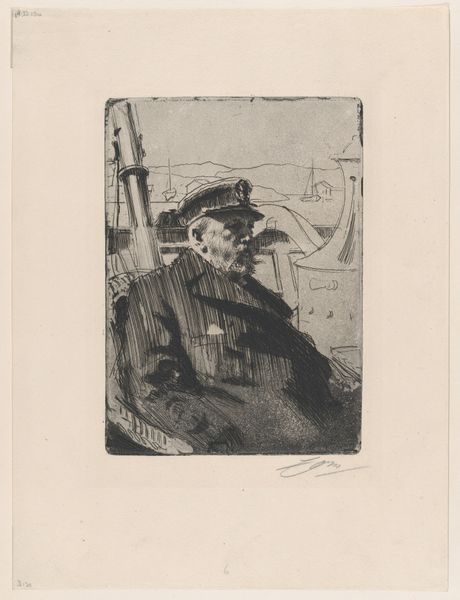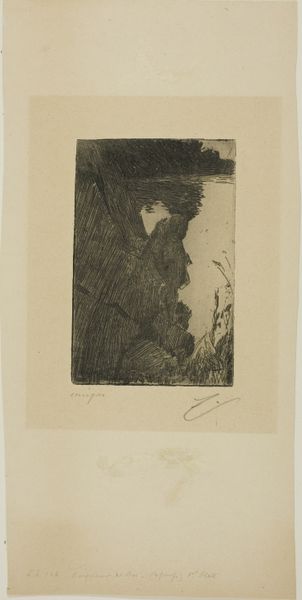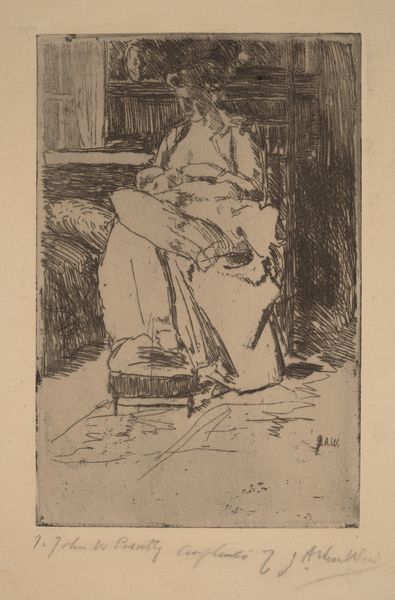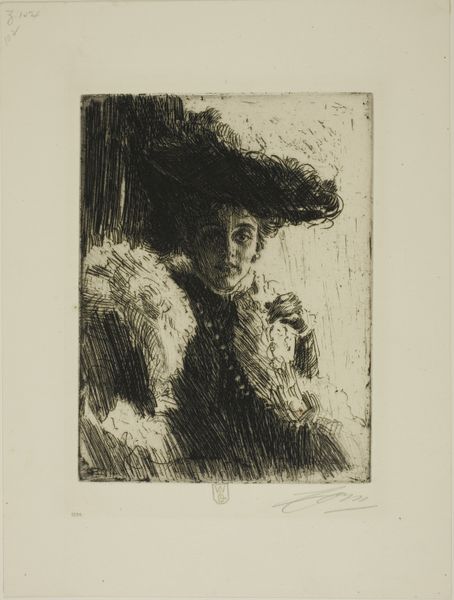
Dimensions: height 196 mm, width 131 mm
Copyright: Rijks Museum: Open Domain
Curator: Here we have Heinrich Wolff’s 1902 etching, "Lezende vrouw," or "Reading Woman." It's a striking example of early 20th-century portraiture executed in printmaking. Editor: My first impression is of subdued elegance. The tonal range is limited, yet within it, a rich complexity of textures suggests an air of sophisticated interiority. There's a compelling balance in its asymmetry. Curator: Indeed. Consider how the very act of reading is portrayed. Books, especially for women, were long symbolic of access to knowledge and intellectual freedom. But note her gaze: directed inward, a dreamy removal from the outside world. It perhaps comments on the perceived limitations of women, who even with literacy, still inhabited a restricted sphere. Editor: Yes, there’s that suggestion. However, on closer viewing, I’m drawn to the pure structure: the almost rectangular shapes formed by her figure, the book, the negative space around her. These coalesce into a balanced study in geometric form that recalls Cubist explorations—though predating the movement. It suggests her individual form and its place within her domestic realm. Curator: Fascinating observation, given the socio-historical currents in the 1900s as they concern women in European society. Look, for example, at her clothing—the feathered hat, the voluminous cloak—each item acts as signifier of class, leisure, even aspiration to higher station, while simultaneously binding and defining the individual within conventional societal roles. The dark swathe could speak to hidden desires, suppressed needs, or rebellion cloaked in normalcy. Editor: Certainly. However, observe Wolff's calculated, limited etching style. It appears almost accidental at points, with unfinished hatching giving energy to an essentially quiet tableau. Consider also, how these lines delineate light—glancing off the brow and pages—then disappear into shadows. A true understanding, perhaps, depends on a formal appreciation of structure, as opposed to strictly narrative speculation? Curator: I believe, ultimately, these angles both inform one another. What emerges is an emotionally potent work speaking to the constraints and freedoms—visible and otherwise—defining women in the dawn of a still rapidly changing era. Editor: Agreed. The balance lies precisely between those viewpoints. By parsing form and icon, the viewer approaches fuller comprehension.
Comments
No comments
Be the first to comment and join the conversation on the ultimate creative platform.
